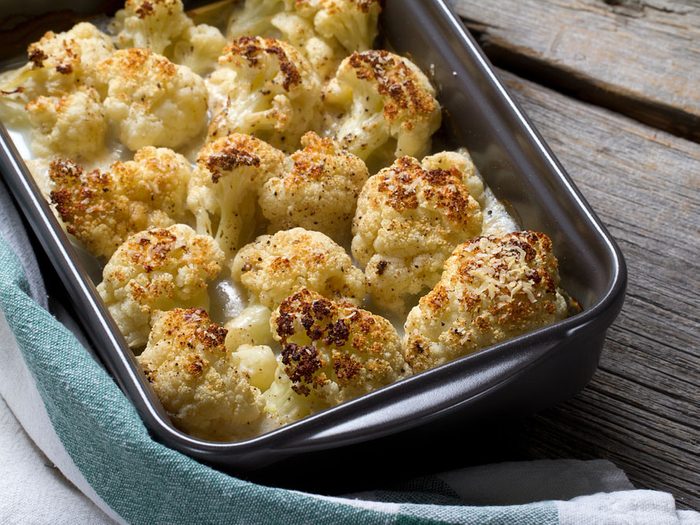
Cauliflower vs Kale
Both kale and-surprise!-cauliflower are good sources of vitamin C. When cooked, cauli has slightly more of this antioxidant powerhouse.
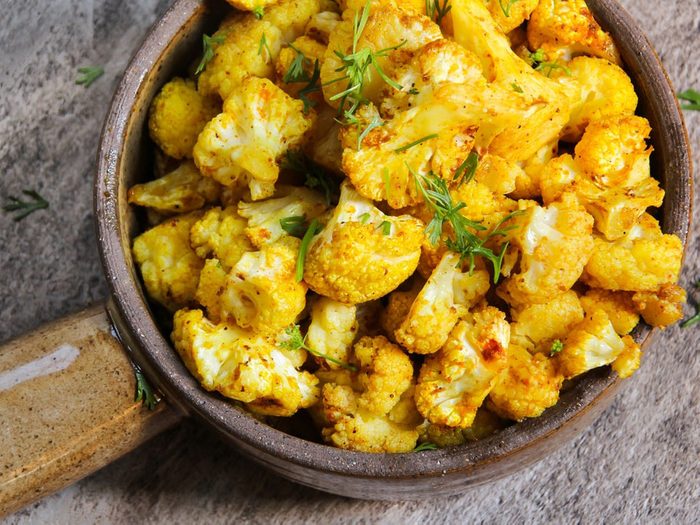
Fibre-rich veggies
When it comes to fibre, cauli has a slight edge: 2.3 g in 100 grams of the cooked veggie, versus 2 grams in the same amount of cooked kale. Raw kale has slightly more fiber, so let’s just say they’re even on this point. It’s a win-win: yay for fibre!
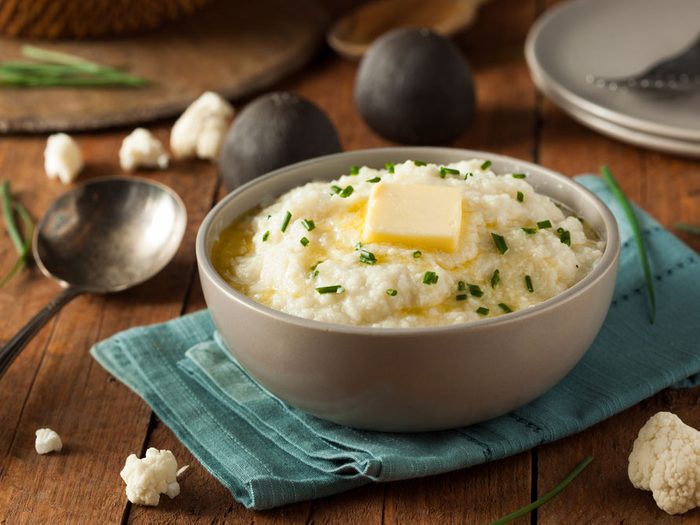
Mashed cauliflower
Here’s a fun swap: Mash cauliflower and it looks and tastes just like mashed potatoes! Have you tried mashing kale? Didn’t think so!
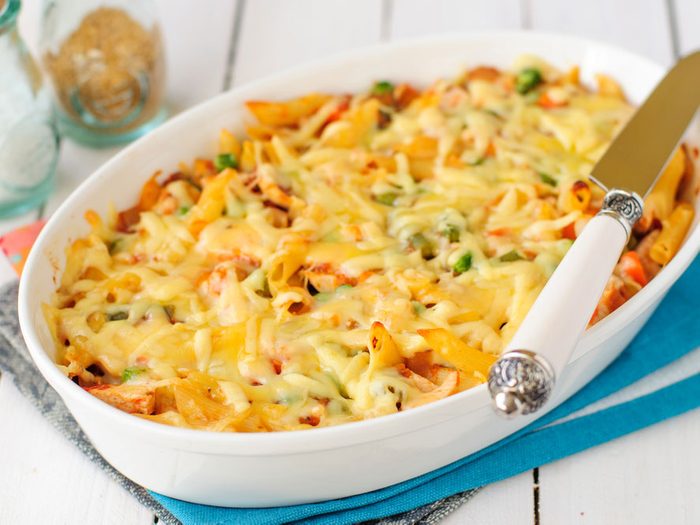
Easy cauliflower recipes
Unlike the bitter green, cauliflower is easily hidden in foods for a nutrient-packed boost. Try it in casseroles and pasta dishes, or mix a purée into the cheese sauce for mac and cheese. (Try it in our Dairy-Free Creamy Macaroni Bake recipe.)
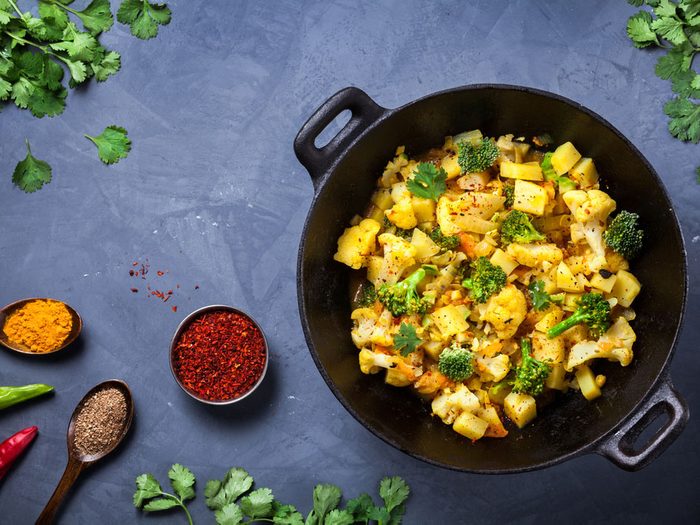
Low-calorie nutrition
Kale is low in calories-just 36 in a cup of cooked kale. You know what’s even lower? A cup of cooked cauli has 29 cals. (Try saying that last line 10 times in a row!)
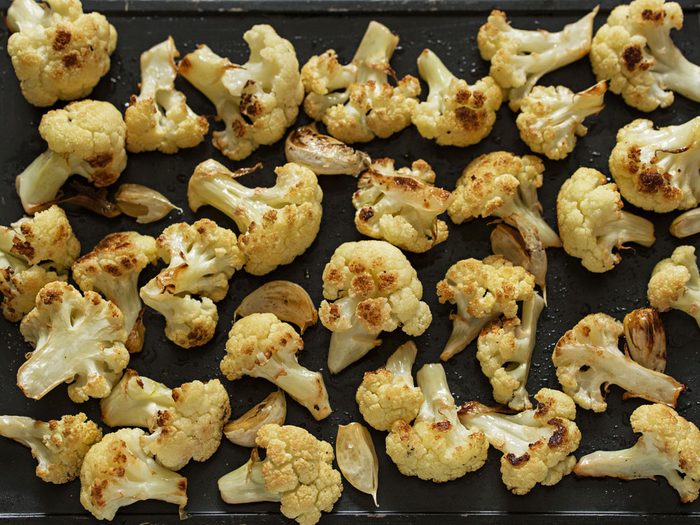
Healthy snacks
Roasted, salted cauli florets are a delicious treat-and way less messy than kale chips. Plus, kale chips are THE WORST when it comes to getting stuck in your teeth. Think about it: Have you ever had to pick a cauliflower floret stuck between your molars? Nope. Moving on…
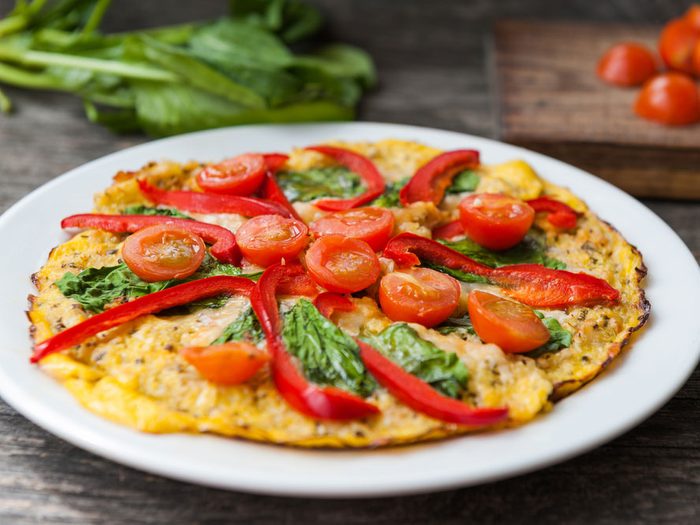
Paleo pizza
You can make a Paleo-diet-friendly cauliflower-crust pizza! Have you tried putting pizza toppings on kale? Not fun.
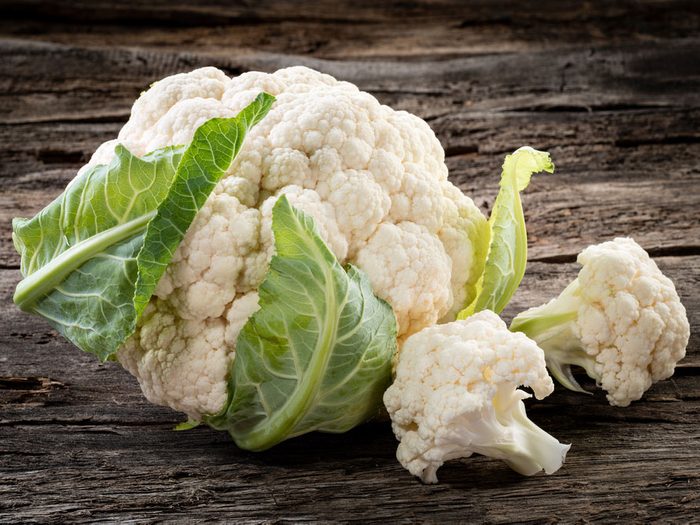
Cauliflower lowers cholesterol
Cauli is higher than kale in panthothenic acid, an important B vitamin that metabolizes fat. There’s also evidence that it may help lower LDL (bad) cholesterol.
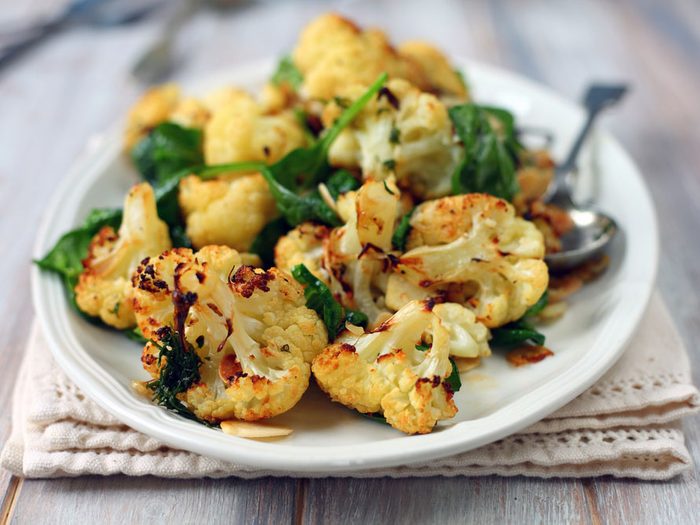
Rich in folate
Cauliflower is higher than kale in folate, a water-soluble B vitamin that helps make red blood cells. Folate can’t be stored in your body, so you should eat folate-rich foods every day.
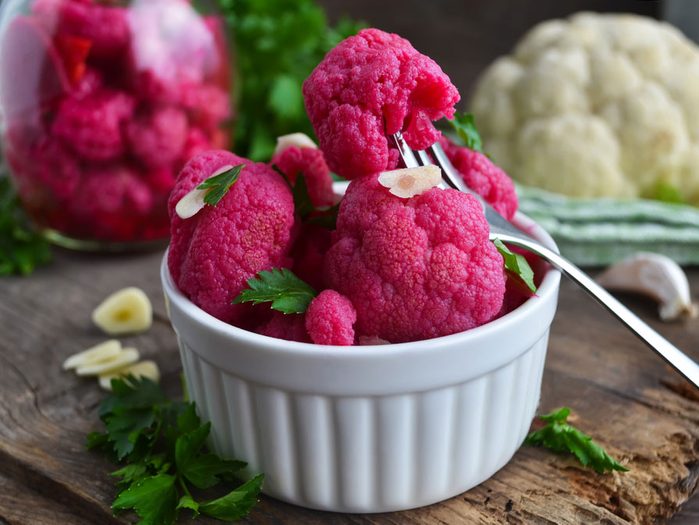
Pickled goodness
The cauliflower florets are the best part of giardiniera, the delicious pickled-veggie antipasto that you can put on sandwiches, or just eat straight outta the jar. Pickled kale? Yuck!
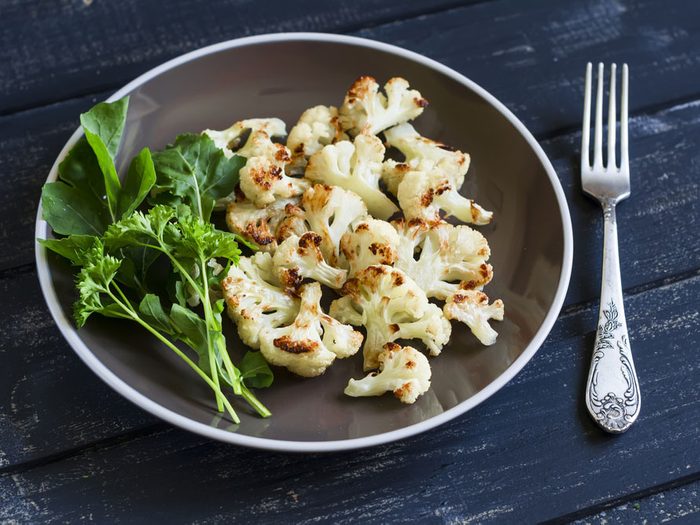
Cook your cauliflower
Cooked cauli is slightly higher than kale in vitamin B6. This water-soluble vitamin helps form hemoglobin, which carries oxygen to your blood.
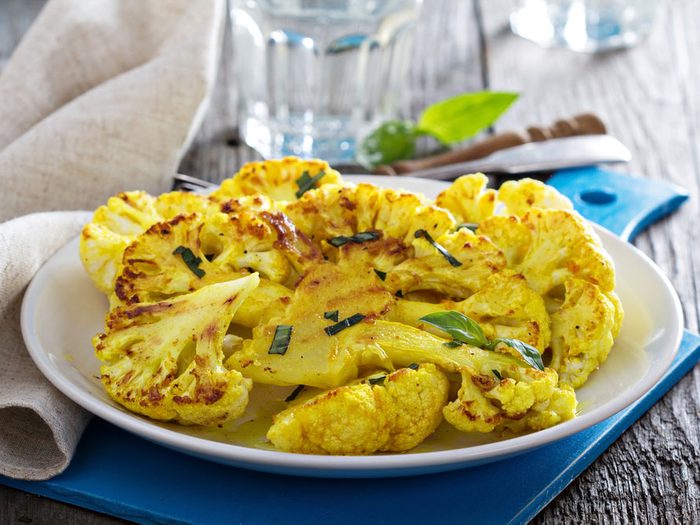
Cauliflower steaks
You can make cauliflower “steaks” by slicing a head into thick slabs, drizzling with olive oil and lemon juice, and roasting at 400 degrees for 30 to 40 minutes. Healthier than a T-bone!
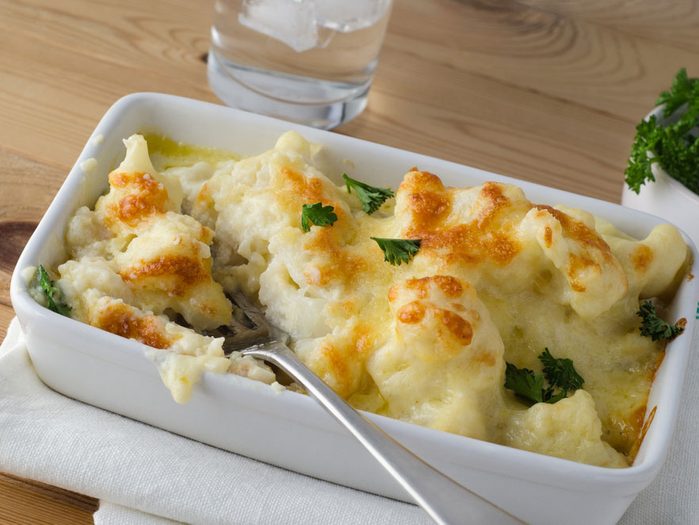
Cauliflower and choline
Cauliflower is packed with choline, a vitamin-like essential nutrient that’s crucial for liver function and brain development. (Raw kale has hardly any choline, btw.)
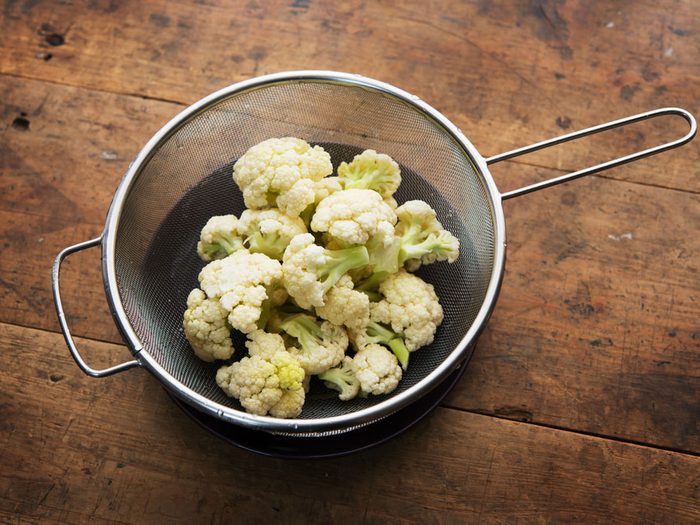
Low-carb!
Here’s another surprising fact: Cauliflower has less carbs than kale. There are 10 g of carbs in 100 grams of raw kale; The same amount of raw cauliflower has just under 5 g.
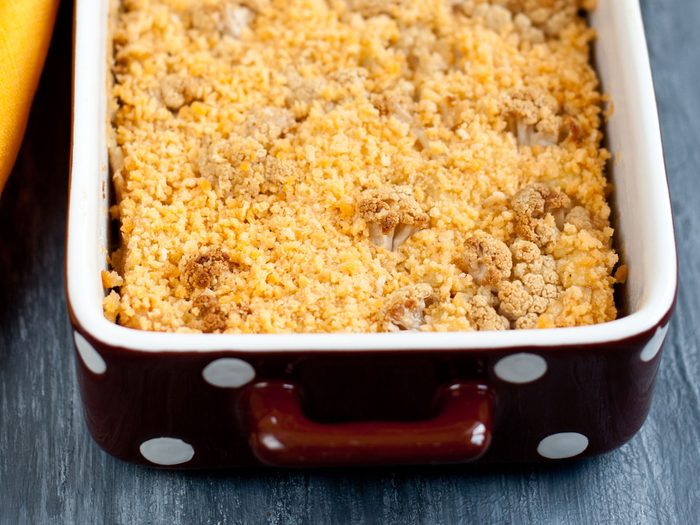
Cauliflower soufflé
You can bake those little florets into a soufflé! Sure, you can probably add kale to a soufflé, too, but that would just be weird. And green. And bitter. Like kale.
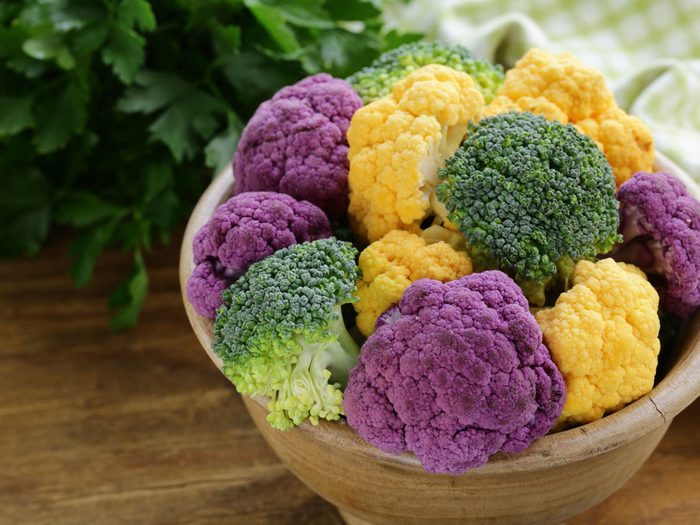
Cauliflower is budget-friendly
When it comes to bang for your buck, cauliflower takes it. Kale can be expensive, especially if you opt for the organic kind. The lowly cauliflower is wallet-friendly.
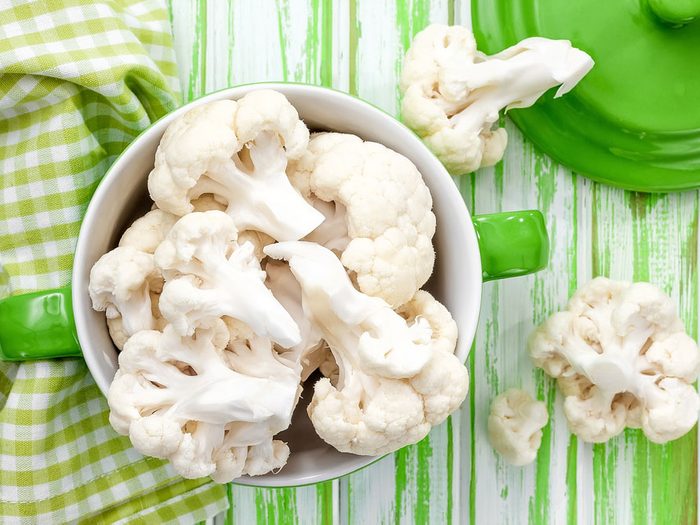
Best before
Cauliflower has a longer shelf life than kale. When stored in the fridge, cauliflower will last up to 3 weeks, while kale generally lasts just 1-2 weeks.
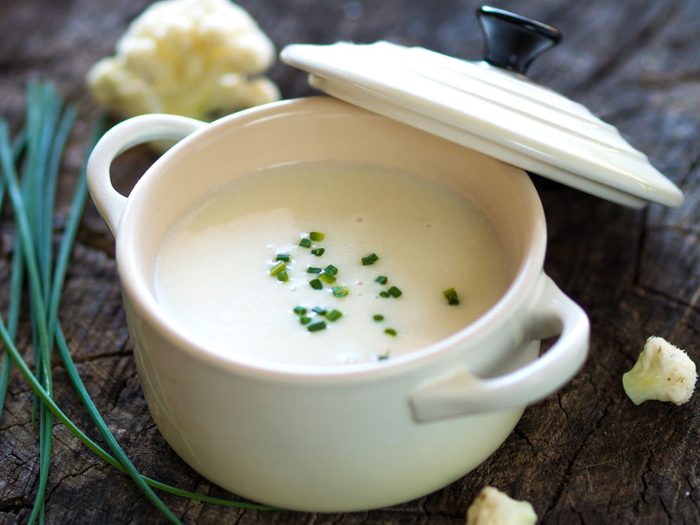
Cauliflower is versatile
When it comes to restaurant dishes, kale plays second fiddle to the humble, but versatile, cauliflower. Chefs everywhere are putting the delicious florets on the menu, and roasting, sautéing, mashing and pureeing them to perfection.
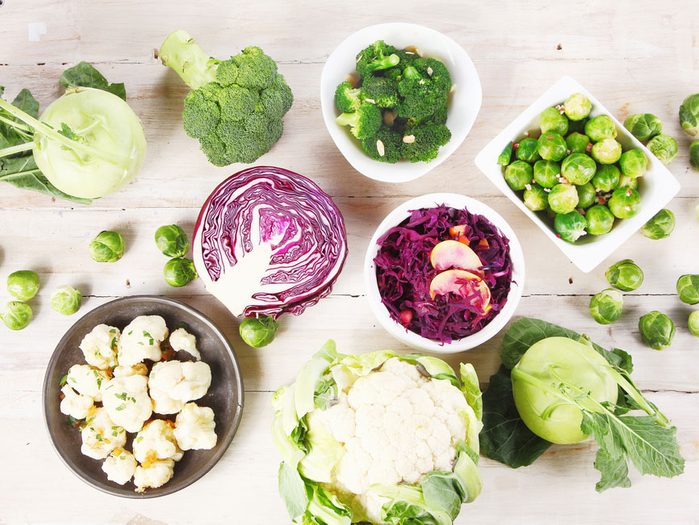
Cancer-fighting
Both cauliflower, kale and other cruciferous veggies contain sulforaphane, a phytochemical known for its potential cancer-fighting properties. A 2011 study found that sulforaphane targeted and killed cancer cells while leaving healthy prostate cells unchanged. And animal studies have shown it to prevent the growth of breast, colon, lung and stomach cancers.
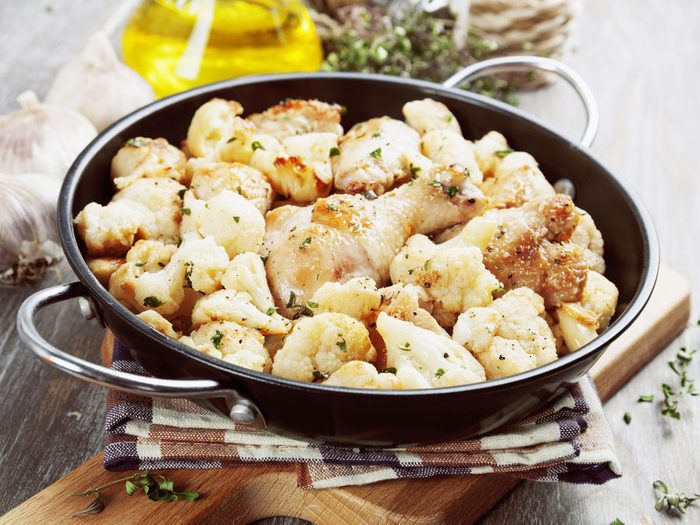
Cauli is cool
How cool is this: There’s a mathematical formula for the fractal patterns on a cauliflower’s surface! European scientists unlocked the secrets of the cauliflower’s geometry in a study published in the New Journal of Physics in 2012. Cauli for the win!
Related:
• The New Superfoods
• Kale: Why I Love It, Despite Its Trendy Status
• 10 Things You Can Make with Chickpeas (Besides Hummus)
